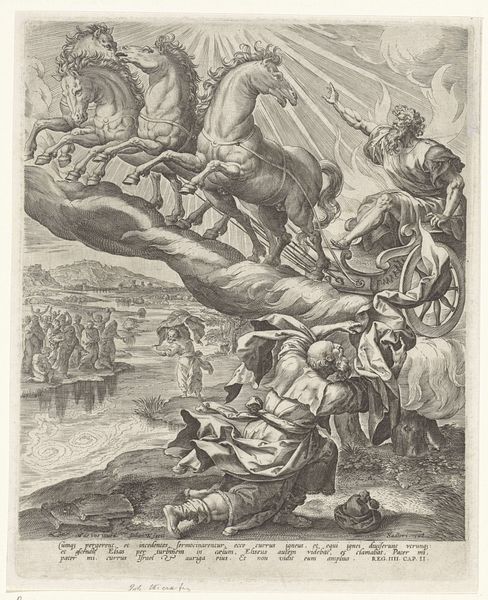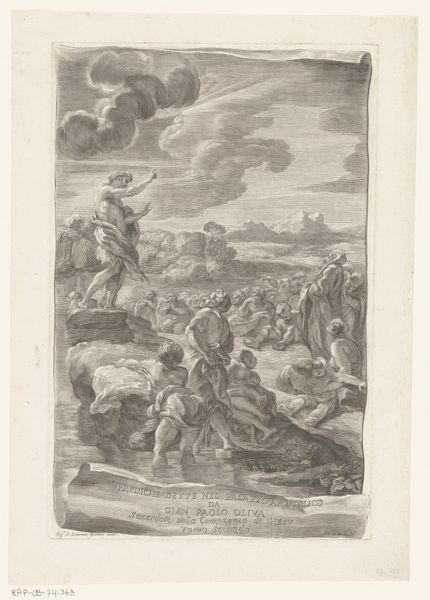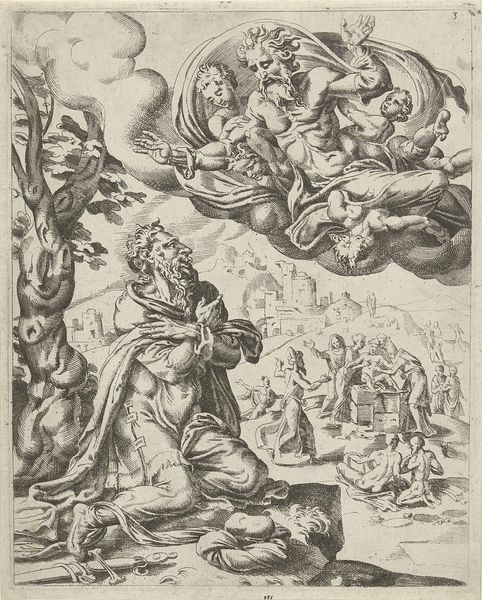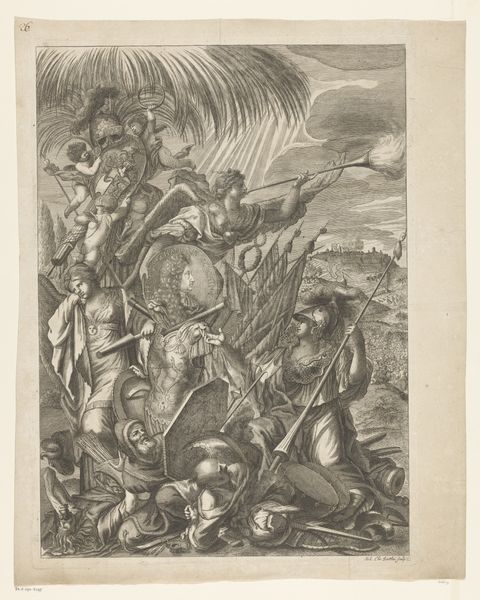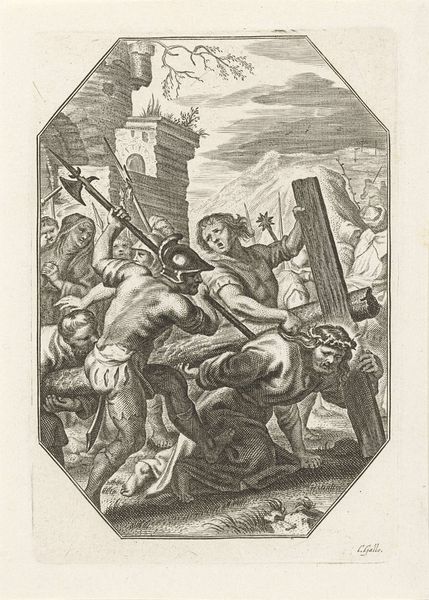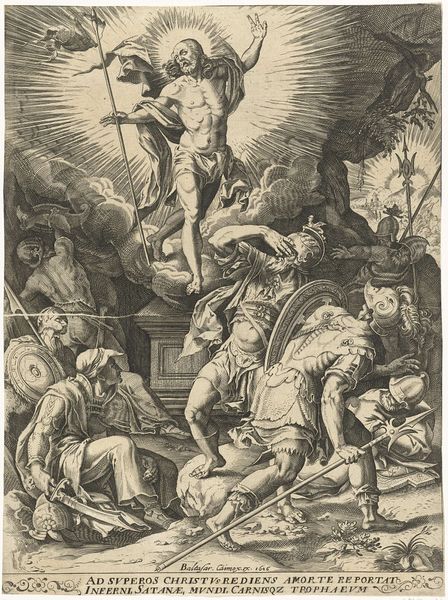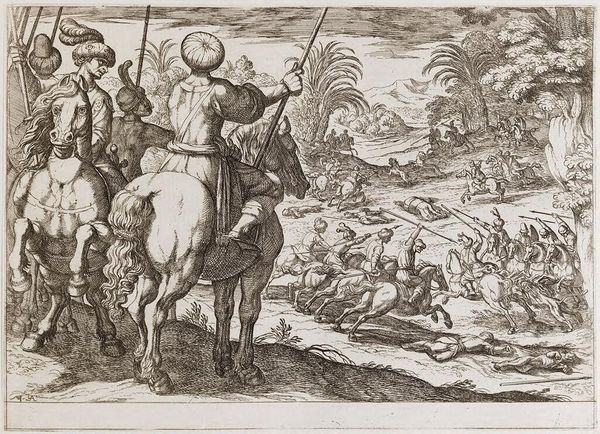
print, engraving
#
allegory
#
baroque
# print
#
landscape
#
figuration
#
history-painting
#
engraving
Dimensions: height 215 mm, width 149 mm
Copyright: Rijks Museum: Open Domain
Curator: This engraving, housed here at the Rijksmuseum, is titled "Neptunus op zijn wagen," or Neptune on his Chariot, dating from after 1633 and attributed to an anonymous artist. Editor: Whew, what a splashy entrance! Immediately, it evokes the dramatic grandeur of a Baroque pageant, all theatrical movement and swirling energy. Neptune looks like he’s ready to rule the ocean—or at least win a really important parade. Curator: Indeed. Representations of Neptune, especially within the Baroque aesthetic, were deeply intertwined with political power and colonial expansion. Visualizing Neptune as ruler of the seas supported narratives of maritime dominance. It reinforces how Europe centered itself. Editor: You can definitely feel that here! Look at the sea nymphs offering him gifts, the cherubic figures overhead… It’s all about reinforcing his importance, which translates to the patron’s importance too. It almost feels overwhelming, you know? In terms of today, its something in line with leaders with a powerful following and public show of power. Curator: Precisely. The engraver utilized detailed lines and dramatic shading to emphasize both the musculature of Neptune and the tumultuous sea around him. Note the position of Neptune himself—his elevated position relative to the other figures on land, literally imposing his perspective in this maritime conquest. Editor: It's interesting to think about how prints like this circulated. Were they like early propaganda, shaping public perception of these rulers and their ambitions? And I have to ask; would you say, back in the day, that someone in power owned such images, maybe as something personal, for the image itself to be like their mirror or projection of who they wanted to become? Curator: Yes, certainly. Prints like "Neptunus op zijn wagen" served multifaceted roles within 17th-century European society, reinforcing prevailing social hierarchies, and contributing to the construction of imperial narratives. Such images promoted these goals both publicly and among private or political entities. Editor: Reflecting on this engraving, it’s fascinating how it encapsulates a specific moment in history—a time of exploration, conquest, and the projection of power through art. Its visual opulence leaves me thinking about the legacy it left on societies and power dynamics. Curator: Absolutely. "Neptunus op zijn wagen" presents critical opportunities to explore complex themes of power, representation, and the role of visual culture in shaping collective identities, all from one dramatic seafaring scene.
Comments
No comments
Be the first to comment and join the conversation on the ultimate creative platform.
